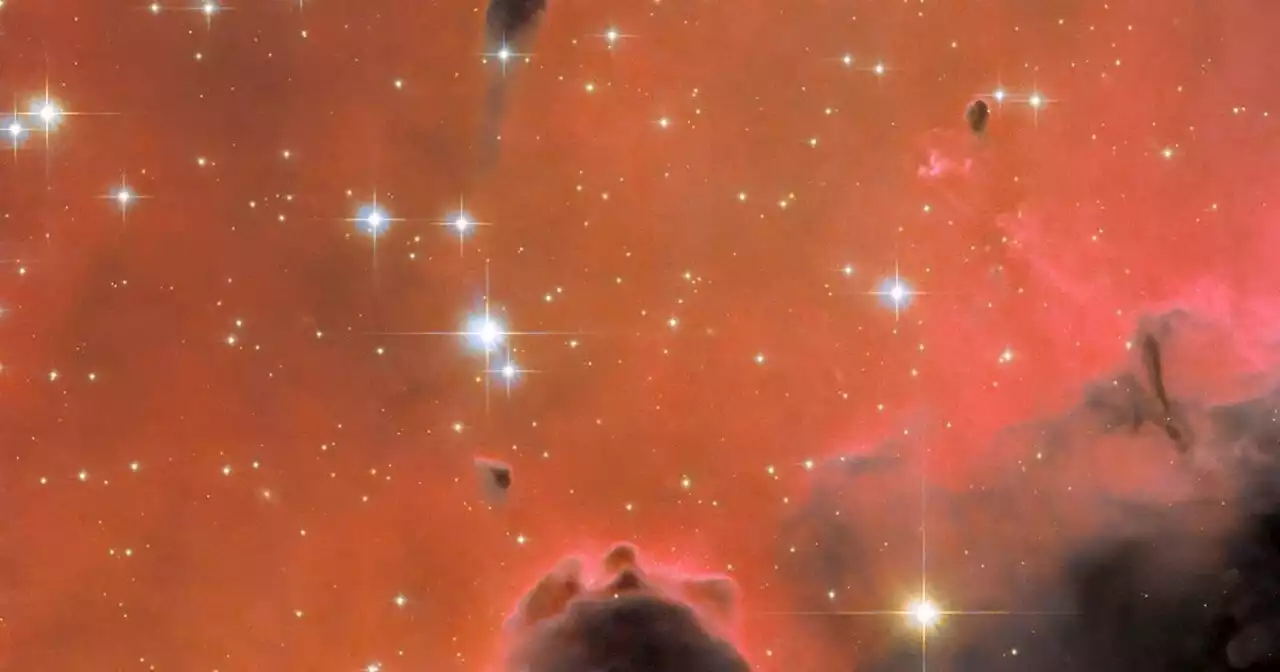A new image from the Hubble Space Telescope shows a nebula in the gorgeous colors of autumn, just in time for leaf-changing season.
A new image from the Hubble Space Telescope shows a nebula in the gorgeous colors of autumn, just in time for leaf-changing season in the northern hemisphere. It shows a part of a nebula called Westerhout 5, located 7,000 light-years away and also known as the Soul Nebula.
It is an emission nebula, meaning that its gorgeous colors and shapes are created by gas which has become ionized by starlight from bright, hot stars. As very massive stars are born and give off large gusts of radiation and streams of particles called stellar winds, these blow away nearby material which prevents more stars from forming too close. This creates cavities within the nebula, and in between these cavities more gas is pushed together.
Recommended Videos One feature of note in this image is the dark region in the upper middle, which is an object called a free-floating Evaporating Gaseous Globule . This dense pocket of gas is more resistant to the radiation which is ionizing the gas around it, creating a kind of “egg” from which new stars can be born.
In this image, the EGGs are of a type called free-floating because they aren’t attached to a particular structure, but they do have a recognizable tadpole-like shape with a head and a tail. Eventually, these pockets of gas may incubate new stars as the density in the surrounding area increases and they become hotter, allowing a protostar to form inside.
United States Latest News, United States Headlines
Similar News:You can also read news stories similar to this one that we have collected from other news sources.
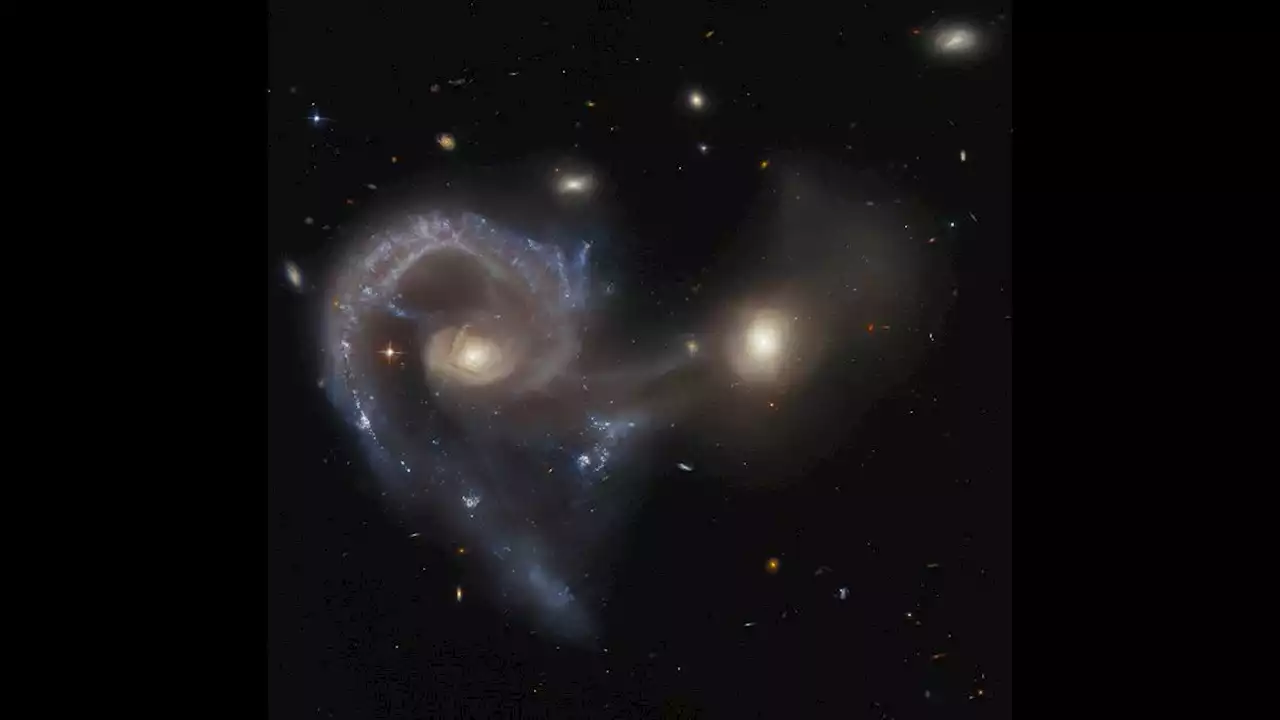 Space photo of the week: Hubble spies a spectacular galaxy crashArp 107 hosts a special spiraling 'Seyfert' galaxy connected to a smaller galaxy by a 'bridge' of dust and gas.
Space photo of the week: Hubble spies a spectacular galaxy crashArp 107 hosts a special spiraling 'Seyfert' galaxy connected to a smaller galaxy by a 'bridge' of dust and gas.
Read more »
 Hubble spots expansion of 20,000-year-old supernova explosionHubble skillfully imaged the expanding shell of gas and dust of the Cygnus Loop into space.
Hubble spots expansion of 20,000-year-old supernova explosionHubble skillfully imaged the expanding shell of gas and dust of the Cygnus Loop into space.
Read more »
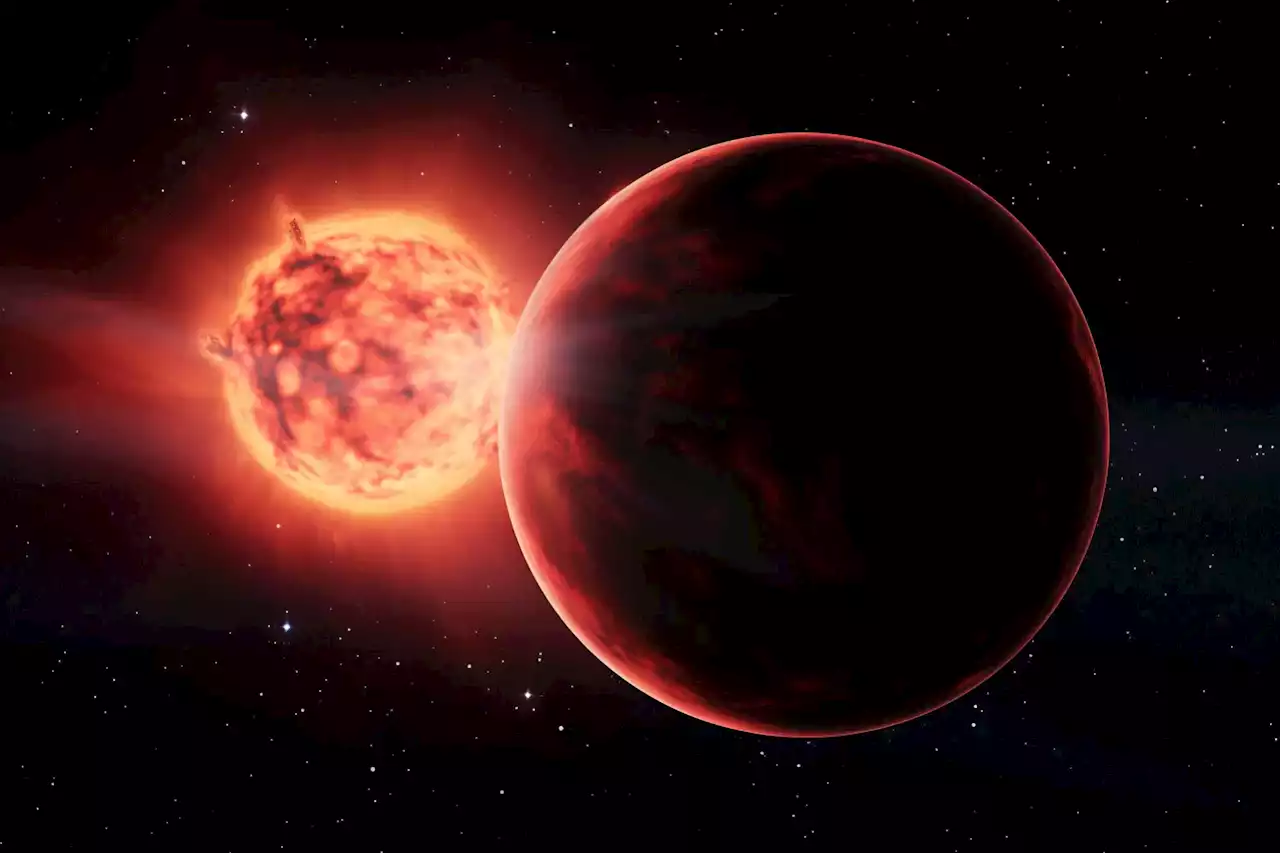 Unlocking Exoplanetary Secrets: Webb Space Telescope’s Deep Dive Into TRAPPIST-1Researchers using the James Webb Space Telescope shed light on the TRAPPIST-1 solar system, particularly planet TRAPPIST-1 b. The study emphasized the star's substantial influence on exoplanetary observations and the challenges of stellar contamination. In a solar system called TRAPPIST-1, 40 lig
Unlocking Exoplanetary Secrets: Webb Space Telescope’s Deep Dive Into TRAPPIST-1Researchers using the James Webb Space Telescope shed light on the TRAPPIST-1 solar system, particularly planet TRAPPIST-1 b. The study emphasized the star's substantial influence on exoplanetary observations and the challenges of stellar contamination. In a solar system called TRAPPIST-1, 40 lig
Read more »
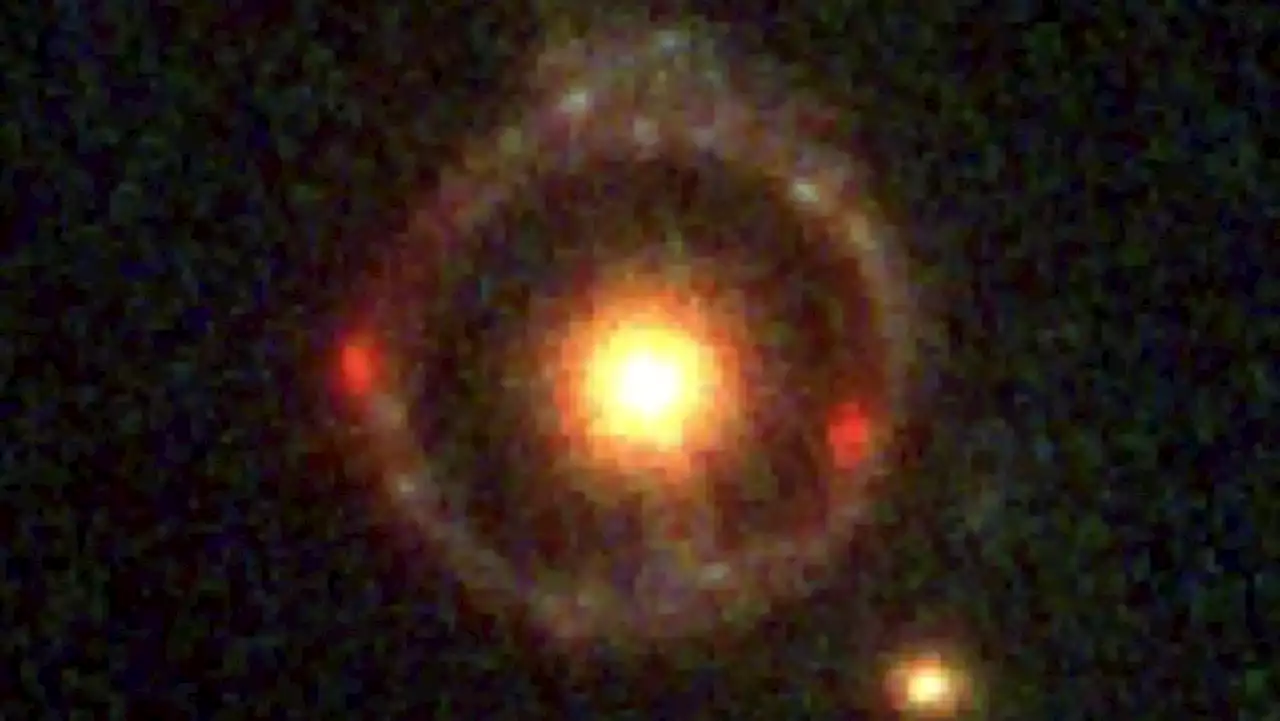 'Einstein ring' snapped by James Webb Space Telescope is most distant gravitationally lensed object ever seenThe James Webb Space Telescope has taken a stunning image of a perfectly formed Einstein ring, which is also the most distant gravitationally lensed object ever detected.
'Einstein ring' snapped by James Webb Space Telescope is most distant gravitationally lensed object ever seenThe James Webb Space Telescope has taken a stunning image of a perfectly formed Einstein ring, which is also the most distant gravitationally lensed object ever detected.
Read more »
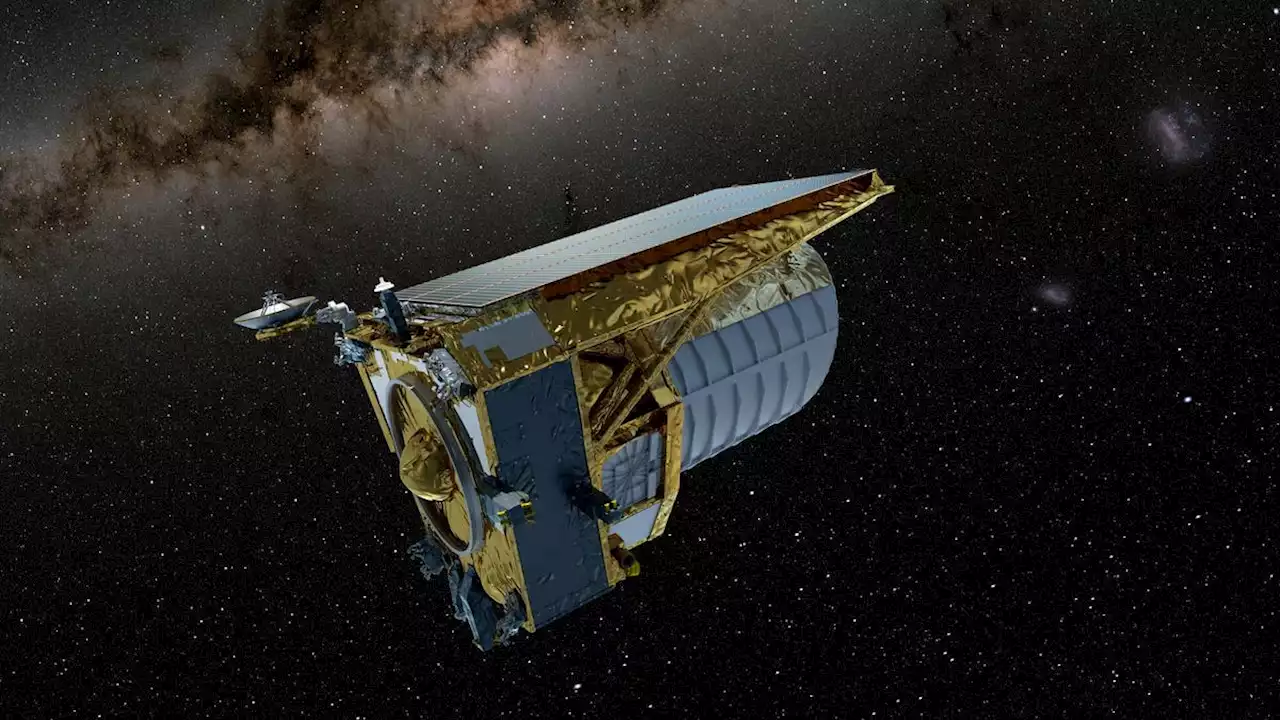 The Euclid space telescope is off to a faltering startLaunched this past summer, the space observatory’s commissioning hasn’t been perfect, but the team remains optimistic.
The Euclid space telescope is off to a faltering startLaunched this past summer, the space observatory’s commissioning hasn’t been perfect, but the team remains optimistic.
Read more »
 James Webb Space Telescope spots two 'baby galaxies'An international team of astronomers has recently detected two “baby galaxies” using the Webb.
James Webb Space Telescope spots two 'baby galaxies'An international team of astronomers has recently detected two “baby galaxies” using the Webb.
Read more »
